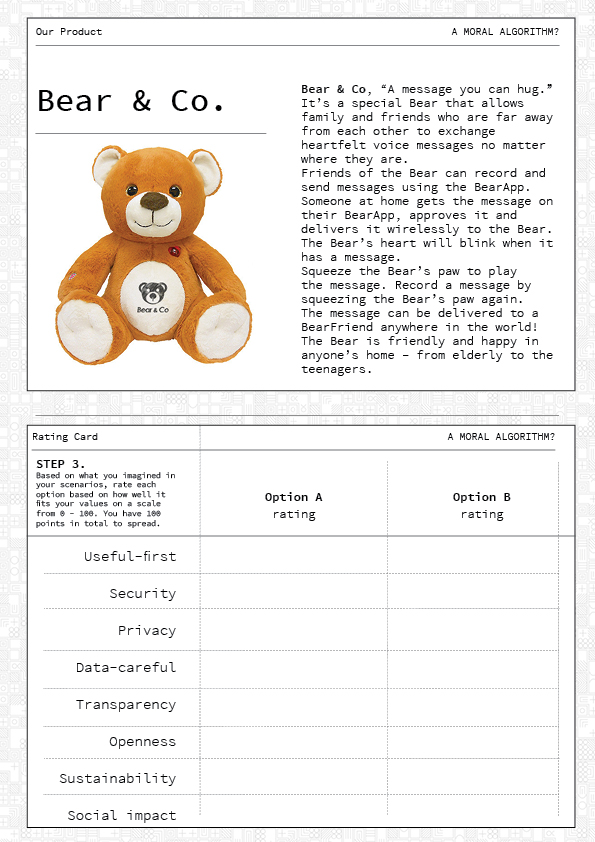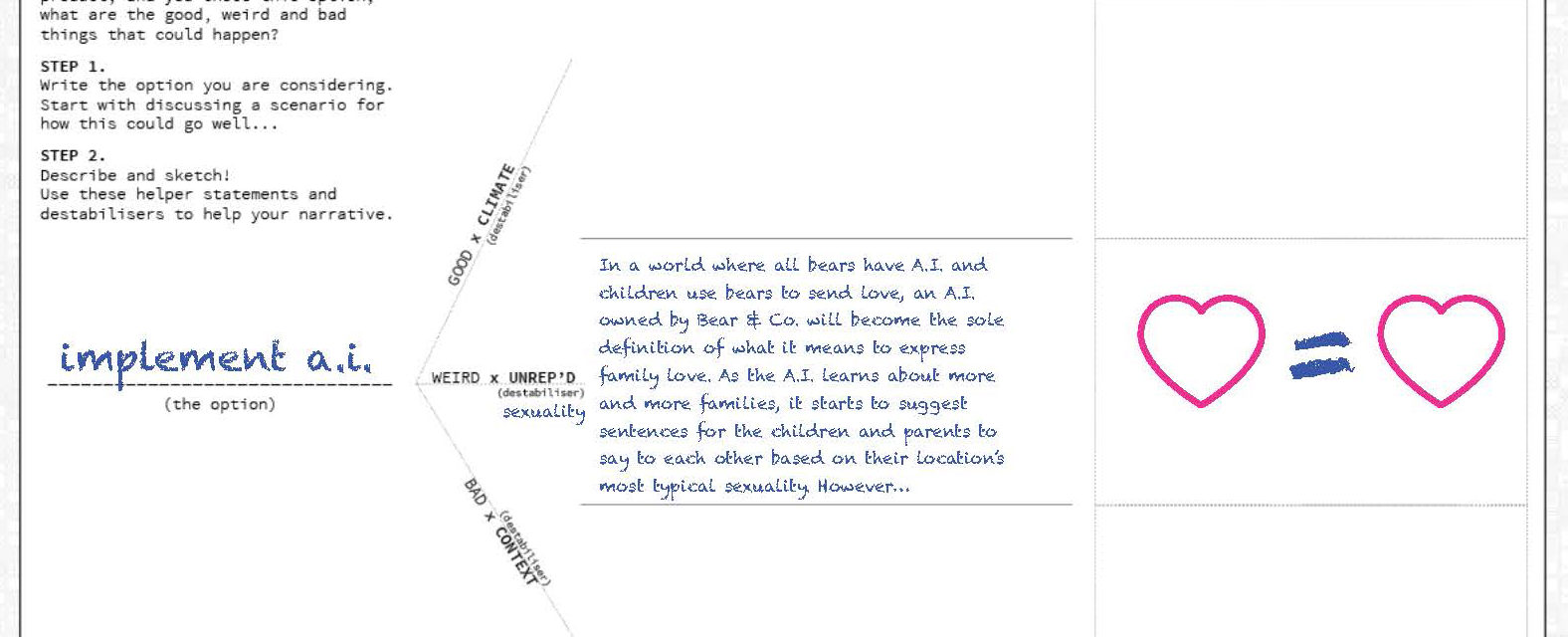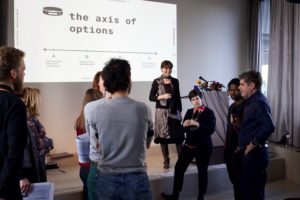Designing ethical things: a moral algorithm?
Considerations for facilitators
Get to know your audience beforehand. As a facilitator, it will be valuable for you to know a little bit about your attendee’s level of expertise in design and development before you start. This workshop is designed for a broad audience, acknowledging that often facilitators do not have control over who might show up to open workshops.
Test locations
CIID, Copenhagen DK, November 2018
ThingsCon 2018, Rotterdam NE, December 2018
Approach
The structure of the workshop is built around a fictional company called Bear & Co. Participants are either one or several design teams, new employees joining the company or a design consultancy hired to help the company out of a tight spot.
Simulate the experience of joining a fictional company. The company’s product and vision should be presented in a similar way as startups currently pitch.
The facilitator should embody the role of an individual working at that company for a longer time than the participants – they are neither the CEO nor the HR manager, simply another designer/developer.
The facilitator then defines that reflecting on our values (which are predefined in the handouts) is part of the onboarding process for joining the company.
- The facilitator asks the participants to reflect on their commitment to our values by drawing in the values card (using the handouts in the download package).
After participants finish this exercise, the facilitator introduces a difficult decision for the group to consider. The decision comes from an external source and is designed to uncover a spectrum of opinion on for example, local vs. 3rd party processing power.
- The decision encompasses a dilemma or “value clash”. For example, the value of privacy comes in contrast with the commitment of creating a sustainable product that delivers meaningful data over time.
The facilitator then gives the group a series of exercises to work through their varying understandings of the implications of the decision’s various options.
- These exercises are designed to immerse participants in envisioning diverse contexts, points of view, and time scales when making the decision.
Finally, the facilitator gives to the groups, tools to evaluate the options they have now worked through in step 4, and invites them to take and reflect upon a final decision. The decision-taking tool resurfaces the values, where participants are asked to evaluate the options according to how well they do or do not align with the values upon which they have previously reflected upon in step 2.
- This final step also includes a template for summarizing the experience of the entire simulation, therefore allowing participants to track back their learnings and the steps they followed.
The facilitator ends the simulation and invites participants to reflect and give feedback on the process and paper tools.





